
Pakota (Yavapai: "Big Man" or Nya-kwa-la-hwa-la "Long Black Fellow" [1] ) was a 19th-century Yavapai leader.

Pakota (Yavapai: "Big Man" or Nya-kwa-la-hwa-la "Long Black Fellow" [1] ) was a 19th-century Yavapai leader.
Pakota and his nephew Takodawa (Yavapai: "Hanging on a limb,") were Yavapai men. They were picked by General Oliver Otis Howard to attend a peace conference in Washington with President Ulysses S. Grant. [2] Earlier, Grant had called for Indians across the country to attend the conference to bring peace between the tribes and the settlers.
Howard wanted Chief Ohatchecama and Chief Jemaspie to attend but Chief Ohatchecama refused because he believed he would never return, while Chief Jemaspie wanted the President to come to Camp Date Creek. In a compromise, the chiefs picked Pakota and Takodawa to go to the conference in their places.
In June, 1872, General Howard, his aide-de-camp, Captain Wilkinson; Superintendent of Indian Affairs Bendell; Pima missionary and teacher Cook; Joe Gacka, the Yavapais' interpreter; and two Indians from Camp Grant with two Indians from the Pima journeyed to the historic meeting. [3] [4]
At the White House, each delegate received $50, a document that proclaimed him to be a “chief”, and a medal with Grant’s image on it. Pakota (later called José Coffee) and Takodawa (later called Washington Charley) were not leaders or chiefs at the time. [5]
Pakota scouted Los Angeles as a possible location for the tribe to farm. [6]

Hin-mah-too-yah-lat-kekt, popularly known as Chief Joseph, Young Joseph, or Joseph the Younger, was a leader of the wal-lam-wat-kain (Wallowa) band of Nez Perce, a Native American tribe of the interior Pacific Northwest region of the United States, in the latter half of the 19th century. He succeeded his father tuekakas in the early 1870s.

The Treaty of Greenville, also known to Americans as the Treaty with the Wyandots, etc., but formally titled A treaty of peace between the United States of America, and the tribes of Indians called the Wyandots, Delawares, Shawanees, Ottawas, Chippewas, Pattawatimas, Miamis, Eel Rivers, Weas, Kickapoos, Piankeshaws, and Kaskaskias was a 1795 treaty between the United States and indigenous nations of the Northwest Territory, including the Wyandot and Delaware peoples, that redefined the boundary between indigenous peoples' lands and territory for European American community settlement.

Red Cloud was a leader of the Oglala Lakota from 1865 to 1909. He was one of the most capable Native American opponents whom the United States Army faced in the western territories. He defeated the United States during Red Cloud's War, which was a fight over control of the Powder River Country in northeastern Wyoming and southern Montana. The largest action of the war was the 1866 Fetterman Fight, with 81 US soldiers killed; it was the worst military defeat suffered by the US Army on the Great Plains until the Battle of the Little Bighorn 10 years later.

The Western Apache live primarily in east central Arizona, in the United States and north of Mexico in the states of Sonora and Chihuahua. Most live within reservations. The Fort Apache Indian Reservation, San Carlos Apache Indian Reservation, Yavapai-Apache Nation, Tonto Apache, and the Fort McDowell Yavapai Nation are home to the majority of Western Apache and are the bases of their federally recognized tribes. In addition, there are numerous bands. The Western Apache bands call themselves Ndee (Indé). Because of dialectical differences, the Pinaleño/Pinal and Arivaipa/Aravaipa bands of the San Carlos Apache pronounce the word as Innee or Nnēē:.

The Yavapai-Prescott Indian Tribe, formerly known as the Yavapai-Prescott Tribe of the Yavapai Reservation, a federally recognized tribe of Yavapai people. Fewer than 200 people are enrolled in the tribe.

The Tonto Apache is one of the groups of Western Apache people and a federally recognized tribe, the Tonto Apache Tribe of Arizona. The term is also used for their dialect, one of the three dialects of the Western Apache language.
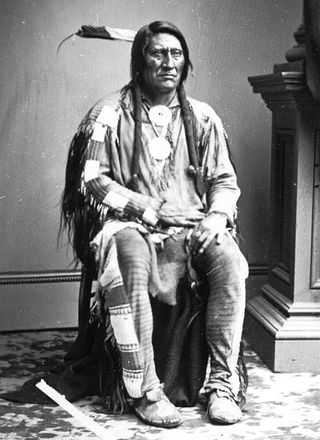
Lean Bear, alternatively translated as Starving Bear, was a Cheyenne peace chief. He was a member of the Council of Forty-four, a tribal governance devoted to maintaining peace with encroaching United States settlers. Lean Bear's most notable peace deals include the Treaty of Fort Wise and a meeting with US President Abraham Lincoln. His work towards peace between his people and the American settlers in the Southern Plains was cut short when he was killed by the 1st Colorado Cavalry Regiment and violent retaliations ensued.

The Camp Grant massacre, on April 30, 1871, was an attack on Pinal and Aravaipa Apaches who surrendered to the United States Army at Camp Grant, Arizona, along the San Pedro River. The massacre led to a series of battles and campaigns fought between the Americans, the Apache, and their Yavapai allies, which continued into 1875, the most notable being General George Crook's Tonto Basin Campaign of 1872 and 1873.
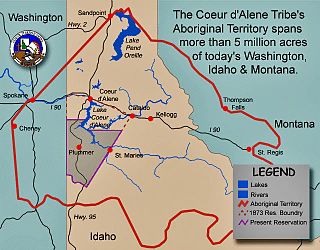
The Coeur d'Alene War of 1858, also known as the Spokane-Coeur d'Alene-Pend d'oreille-Paloos War, was the second phase of the Yakima War, involving a series of encounters between the allied Native American tribes of the Skitswish, Kalispell, Spokane, Palouse and Northern Paiute against United States Army forces in Washington and Idaho.
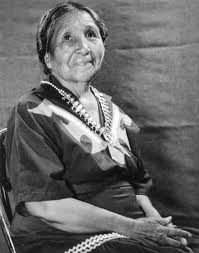
Viola Jimulla was the Chief of the Prescott Yavapai tribe. She became Chief when her husband, who was also a Chief of the tribe, died in an accident in 1940. She remained Chief until her death. She was known for improving living conditions, and for her work with the Presbyterian Church.

The Yavapai are a Native American tribe in Arizona. Historically, the Yavapai – literally “people of the sun” – were divided into four geographical bands who identified as separate, independent peoples: the Ɖulv G’paaya, or Western Yavapai; the Yaavpe', or Northwestern Yavapai; the Gwev G’paaya, or Southeastern Yavapai; and the Wiipukpaa, or Northeastern Yavapai – Verde Valley Yavapai.

Carlos Montezuma or Wassaja was a Yavapai-Apache Native American, activist and founding member of the Society of American Indians. His birth name, Wassaja, means "Signaling" or "Beckoning" in his native tongue. Wassaja was kidnapped by Pima raiders along with other children to be sold or bartered. Wassaja was then purchased by an Italian photographer Carlo Gentile in Adamsville, for thirty silver dollars. Gentile renamed him "Carlos Montezuma". Montezuma was the first Native American student at the University of Illinois and Northwestern University, and only the second Native American ever to earn a medical degree in an American University after Susan La Flesche Picotte. Wassaja was the first Native American male to receive a medical degree. Until his death Wassaja fought to support the rights of his Yavapai people and other Native Americans.
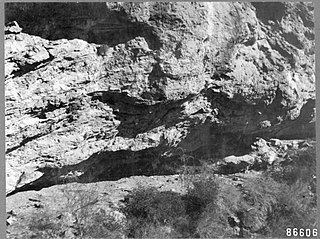
The Yavapai Wars, or the Tonto Wars, were a series of armed conflicts between the Yavapai and Tonto tribes against the United States in the Arizona Territory. The period began no later than 1861, with the arrival of American settlers on Yavapai and Tonto land. At the time, the Yavapai were considered a band of the Western Apache people due to their close relationship with tribes such as the Tonto and Pinal. The war culminated with the Yavapai's removal from the Camp Verde Reservation to San Carlos on February 27, 1875, an event now known as Exodus Day.
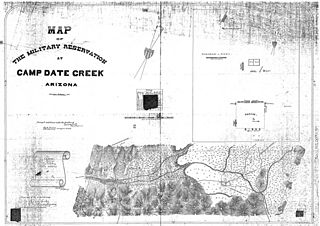
The Hualapai War, or Walapai War, was an armed conflict fought from 1865 to 1870 between the Hualapai native Americans and the United States in Arizona Territory. The Yavapai also participated on the side of the Hualapai and Mohave scouts were employed by the United States Army. Following the death of the prominent Yavapai leader Anasa in April 1865, the natives began raiding American settlements which provoked a response by the United States Army forces stationed in the area. By the spring of 1869 disease forced the majority of the Hualapais to surrender though some skirmishing continued for almost two more years.
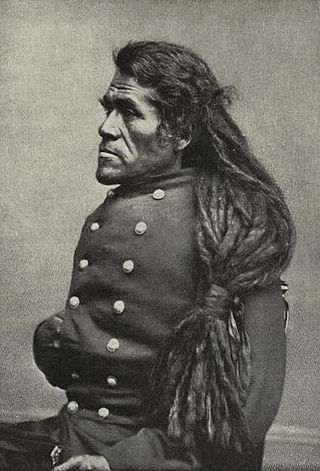
Irataba was a leader of the Mohave Nation, known as a mediator between the Mohave and the United States. He was born near the Colorado River in present-day Arizona. Irataba was a renowned orator and one of the first Mohave to speak English, a skill he used to develop relations with the United States.

Patricia Ann McGee (Yavapai-Hualapai) was a Native American tribal leader who served as president of the Yavapai-Prescott Tribe. An effective advocate for her tribe, she garnered millions of dollars in federal and state funds to improve the infrastructure on the Yavapai reservation. She negotiated a water settlement agreement between the federal government and the tribe and established the first gaming license for any Indian tribe in Arizona. She helped develop a community center which earned a federal design award and served as an educational center to preserve both the culture and language of the Yavapai. In 2006, McGee was nominated by Supreme Court Justice Sandra Day O'Connor and inducted into the Arizona Women's Hall of Fame.
The Battle at Fort Utah was a violent attack in 1850 in which 90 Mormon militiamen surrounded an encampment of Timpanogos families on the Provo River one winter morning, and laid siege for two days, eventually shooting between 40 and 100 Native American men and one woman with guns and a cannon during the attack as well as during the pursuit and capture of the two groups that fled the last night. One militiaman died from return fire during the siege. Of the Timpanogos people who fled in the night, one group escaped southward, and the other ran east to Rock Canyon. Both groups were captured, however, and the men were executed. Over 40 Timpanogos children, women, and a few men were taken as prisoners to nearby Fort Utah. They were later taken northward to the Salt Lake Valley and sold as slaves to church members there. The bodies of up to 50 Timpanogos men were beheaded by some of the settlers and their heads put on display at the fort as a warning to the mostly women and children prisoners inside.
Vera Brown Starr was the first woman elected as chair of the Yavapai-Apache Nation and served two years in the office, as well as serving over fifteen years on the council. She was one of the delegates to the 1977 National Women's Conference, a major U.S. women's conference held in conjunction with the International Women's Year celebrations of the United Nations. In 2012, her name was inscribed on an arch at the University of Arizona, recognizing women who were Native American leaders.

President Ulysses S. Grant sympathized with the plight of Native Americans and believed that the original occupants of the land were worthy of study. Grant's Inauguration Address set the tone for the Grant administration Native American Peace policy. The Board of Indian Commissioners was created to make reforms in Native policy and to ensure Native tribes received federal help. Grant lobbied the United States Congress to ensure that Native peoples would receive adequate funding. The hallmark of Grant's Peace policy was the incorporation of religious groups that served on Native agencies, which were dispersed throughout the United States.

Friday (Arapaho: Teenokuhu or Warshinun, also known as Friday Fitzpatrick, was an Arapaho leader and interpreter in the mid to late 1800s. When he was around the age of eight, he was separated from his band and was taken in by a white trapper. During the next seven years, he was schooled in St. Louis, Missouri and went on trapping expeditions with his informally adopted father, Thomas Fitzpatrick. After he was recognized by his mother during an encounter with the Arapaho, he returned to the tribe.